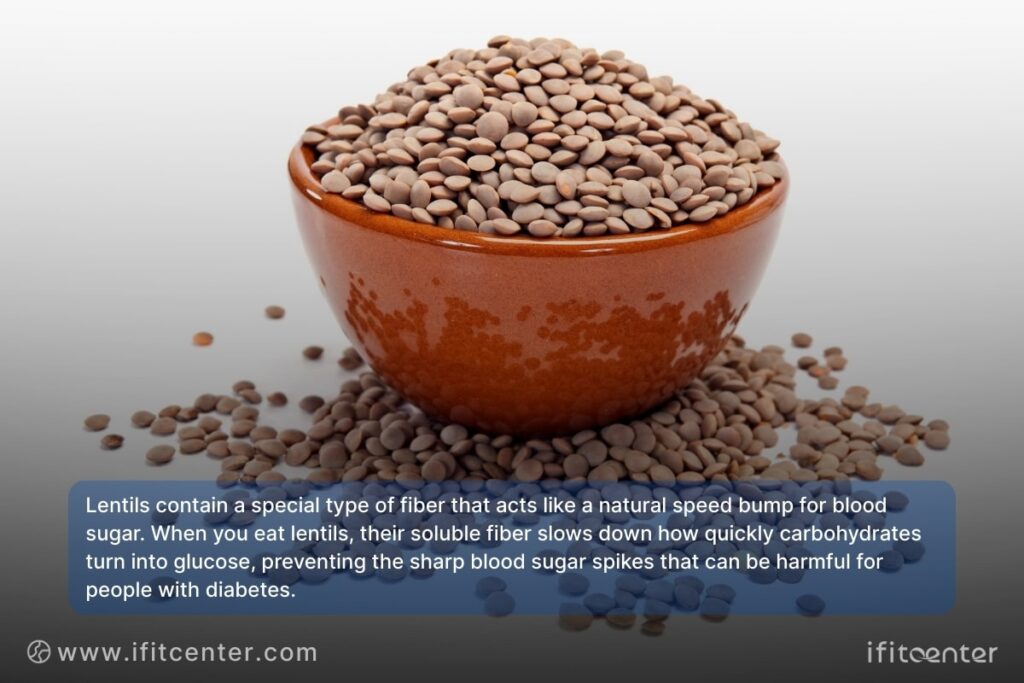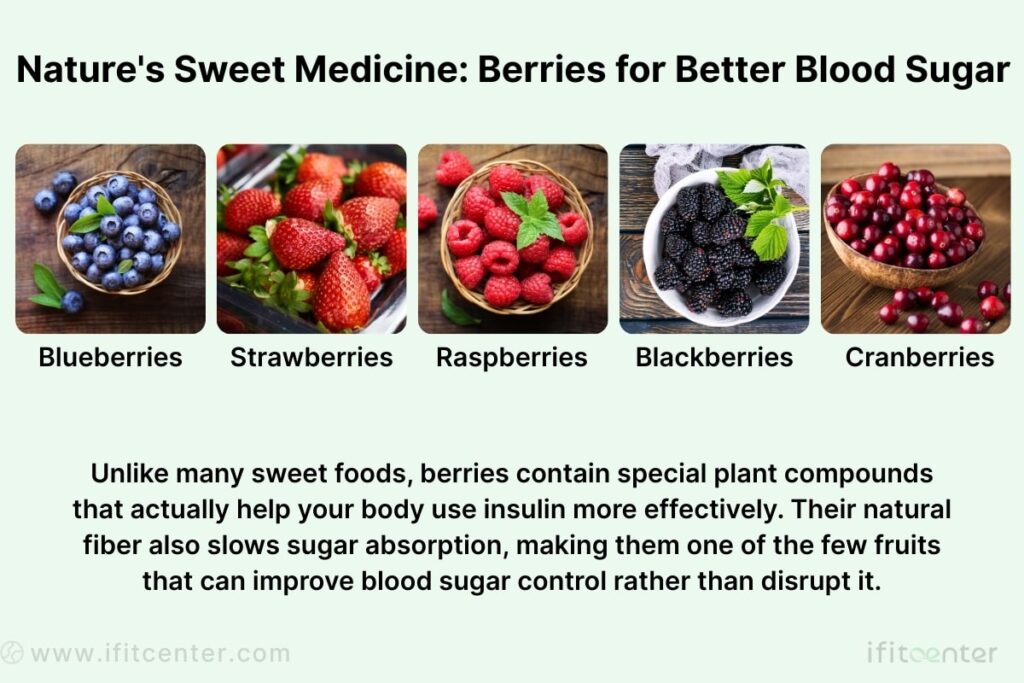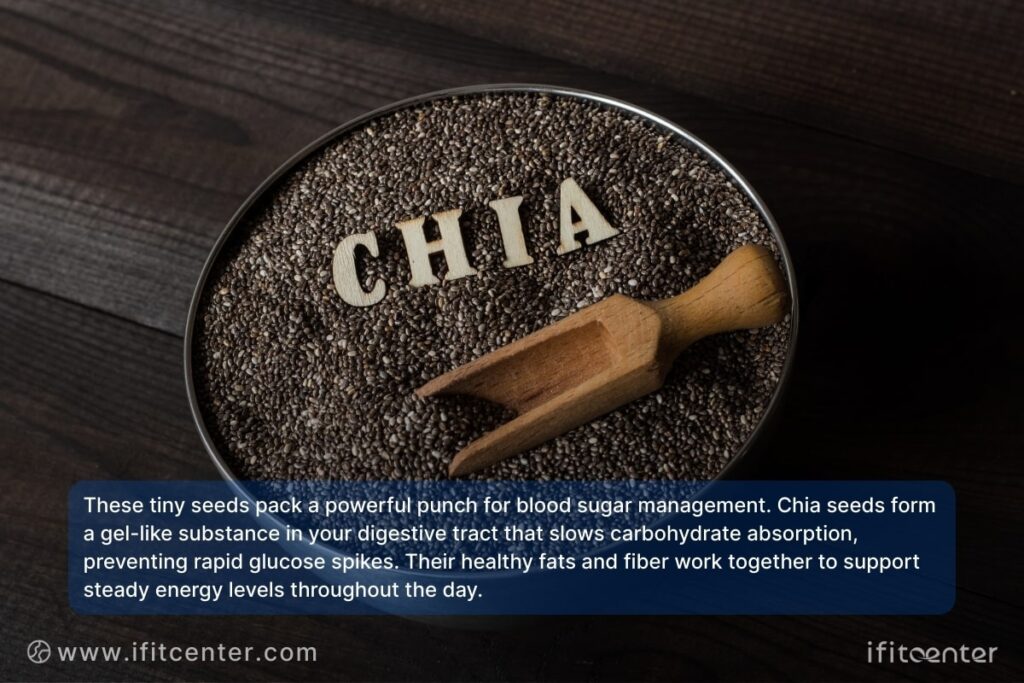When it comes to managing diabetes, many believe that avoiding carbohydrates completely is the only dietary solution. Others think that “superfoods for diabetes” is just marketing hype with no scientific basis. These common misconceptions not only limit dietary choices but may also prevent people from accessing natural, powerful allies in blood sugar management.
Contrary to popular belief, certain foods possess unique properties that actively help regulate blood glucose levels. The term “superfood” isn’t just clever marketing—it describes foods with exceptional nutrient density and specific compounds that address particular health concerns. For people with diabetes, these foods offer tangible benefits supported by rigorous scientific research.
Another misconception is that all fruits raise blood sugar dramatically. While some fruits can cause glucose spikes, others—particularly berries—actually help improve insulin sensitivity according to research published in the Journal of Nutrition. Similarly, many believe that all fats should be avoided, yet studies show certain fatty foods like walnuts can significantly improve glycemic control.
At IFitCenter, we’re dedicated to providing evidence-based information about nutrition’s role in health management. In this comprehensive guide, we’ll examine 15 scientifically-validated superfoods for diabetes that can complement medical treatments and lifestyle modifications to support healthy blood glucose levels.
Let’s separate fact from fiction and discover which foods truly deserve the title of “diabetes superfoods” based on the latest clinical evidence.
Top Evidence-Based Superfoods for Diabetes Management
Based on scientific research, certain foods stand out for their remarkable ability to help manage blood sugar levels. These aren’t just generally healthy foods—they contain specific compounds that actively support glucose regulation through multiple mechanisms.
Fermented Dairy Products – The Surprising Blood Sugar Stabilizers

Despite concerns about dairy among some people with diabetes, research shows that fermented dairy products like yogurt and kefir can actually improve blood sugar control. These foods contain beneficial bacteria that directly influence glucose metabolism.
A 2023 systematic review found that fermented dairy consumption was associated with approximately a 1% reduction in HbA1c levels in people with type 2 diabetes. This improvement is clinically significant, as each 1% reduction in HbA1c correlates with a 21% decrease in diabetes-related complications.
The probiotics in fermented dairy work through several mechanisms:
- They produce short-chain fatty acids that improve insulin sensitivity
- They reduce inflammation in the gut, which improves overall metabolic function
- They help regulate the hormones that control appetite and blood sugar
For optimal benefits, research suggests consuming 1-2 servings of plain, unsweetened yogurt or kefir daily. Greek yogurt offers additional advantages due to its higher protein content, which further helps stabilize blood sugar. Look for products with active cultures and no added sugars.
Fiber-Rich Legumes – Nature’s Blood Sugar Regulators

Beans, lentils, and chickpeas consistently rank among the top foods for diabetes management due to their exceptional combination of soluble fiber, plant protein, and resistant starch—a trio that creates the perfect blood sugar-regulating effect.
Research published in the British Medical Journal found that consuming just one cup of legumes daily improved overall glycemic control while also reducing cardiovascular risk factors in people with type 2 diabetes.
Each type of legume offers unique benefits:
- Lentils have the lowest glycemic index among legumes and are particularly rich in soluble fiber
- Chickpeas contain resistant starch that feeds beneficial gut bacteria
- Black beans provide anthocyanins (the compounds that give them their dark color), which have been shown to improve insulin sensitivity
The soluble fiber in legumes forms a gel-like substance in your digestive tract that traps carbohydrates and sugars, slowing their absorption into the bloodstream. This prevents the sharp blood sugar spikes that can be particularly problematic for people with diabetes.
In our IFitCenter blog, we have provided you with a completely free database about various diseases, which knowing about them will be very helpful in the prevention and control of diseases, especially diabetes. To access the first part of the materials related to diabetes, I recommend using the links below:
- diabetes explained simply
- type 1 diabetes explained simply
- type 2 diabetes explained simply
- how does obesity cause diabetes
- how to diagnosis diabetes
Whole Grains – Choosing the Right Carbohydrates
Not all carbohydrates affect blood sugar equally. True whole grains—those with their bran, germ, and endosperm intact—contain fiber, protein, and beneficial compounds that moderate their impact on blood glucose levels.
It’s important to distinguish between actual whole grains and refined products labeled as “made with whole grains,” which often contain significant amounts of processed flour. The intact structure of true whole grains is key to their blood sugar benefits.
Three whole grains stand out for their exceptional diabetes-friendly properties:
- Barley contains a special type of soluble fiber called beta-glucan, which has been shown to lower post-meal blood sugar by up to 20%. Both hulled barley and pearl barley provide benefits, though hulled retains more nutrients.
- Oats also contain beta-glucan fiber, which forms a gel-like substance in the digestive tract, slowing carbohydrate absorption. Steel-cut and rolled oats have a lower glycemic impact than instant varieties.
- Quinoa has a lower glycemic index than most grains and contains complete protein, which helps stabilize blood sugar levels. Its high magnesium content may also improve insulin sensitivity.
A common misconception is that people with diabetes should avoid all grains. However, research shows that whole grain consumption is actually associated with better glycemic control and reduced risk of type 2 diabetes. The key is choosing intact grains and watching portion sizes.
Berries – Blood Sugar-Friendly Fruit Options

Unlike many fruits with high sugar content, berries offer exceptional benefits for blood glucose management. Blueberries, strawberries, and raspberries contain powerful compounds called anthocyanins that give them their vibrant colors and provide significant metabolic benefits.
These anthocyanins activate specific cellular pathways that enhance insulin sensitivity and glucose uptake in muscle tissues. A study in the Journal of Nutrition found that regular berry consumption improved insulin sensitivity in adults with insulin resistance.
All berries offer benefits, but each variety has unique advantages:
- Blueberries contain the highest anthocyanin content and show the strongest effects on insulin sensitivity
- Strawberries are rich in ellagic acid, which helps manage post-meal blood sugar spikes
- Raspberries provide significant fiber (8g per cup) that slows carbohydrate absorption
On the IFitCenter blog, we have provided a comprehensive guide for diabetes, completely free of charge and based on the latest research. By viewing these articles, in addition to increasing your general knowledge in this field, you can easily manage this disease in a principled manner. To access the first part of the articles, simply use the links below:
- What is Diabetes?
- Difference Between Type 1 and Type 2 Diabetes
- What Are the Complications of Diabetes?
- Diabetes Diagnosis Method
- Can Diabetes Be Cured?
- hba1c diabetes diagnosis
- is diabetes genetic disorder?
- low-sugar fruits for diabetics
Fatty Fish – Essential Omega-3 Sources for Diabetes
Fatty fish provide unique benefits for diabetes management through their omega-3 fatty acid content. These essential fats improve insulin sensitivity while reducing inflammation—a key factor in diabetes progression.
The most beneficial fish include:
- Salmon – Contains some of the highest levels of EPA and DHA omega-3s
- Sardines – Provide omega-3s plus vitamin D, which also impacts glucose metabolism
- Mackerel – Offers a rich source of anti-inflammatory omega-3s (choose Atlantic mackerel over King mackerel)
The anti-inflammatory effects of omega-3s are particularly important for diabetes, as inflammation directly interferes with insulin signaling. Regular consumption of fatty fish has been linked to reduced risks of diabetic retinopathy and kidney disease.
Green Leafy Vegetables – Essential Minerals for Glucose Control
Green leafy vegetables are consistently associated with lower diabetes risk and better glycemic control. Their high fiber content and low calorie density make them ideal for blood sugar management, but their mineral content offers additional specific benefits.
Key micronutrients in leafy greens that support blood sugar regulation include:
- Magnesium – Critical for over 300 enzymatic reactions including those involved in glucose metabolism and insulin action
- Vitamin K – Helps regulate insulin sensitivity and glucose metabolism
- Potassium – Supports proper insulin secretion and cellular glucose uptake
The most beneficial leafy greens include spinach, kale, and arugula, with spinach offering particularly high magnesium content. Studies have found that each daily serving of leafy greens is associated with a significant reduction in diabetes risk.
Nuts and Seeds – Smart Fats for Blood Sugar Balance

Despite their calorie density, regular nut and seed consumption is linked to better blood sugar control and reduced diabetes risk. Their combination of healthy fats, fiber, and plant protein creates a powerful stabilizing effect on glucose levels.
Particularly beneficial options include:
- Walnuts – Contain alpha-linolenic acid (ALA), a plant-based omega-3 that improves insulin sensitivity
- Almonds – Rich in magnesium, which plays a key role in glucose metabolism
- Flaxseeds – Provide both ALA omega-3s and soluble fiber that slows carbohydrate absorption
- Chia seeds – Contain high amounts of soluble fiber that forms a gel in the digestive tract, moderating blood sugar response
In this section, we invite you, dear readers, to study the second part of the materials, which is related to diabetes, in the IFitCenter blog through the links below:
Medicinal Spices for Blood Glucose Management
Certain spices do more than add flavor—they contain compounds with measurable effects on blood glucose levels. Research has identified several spices with significant benefits for diabetes management.
Three spices with the strongest evidence include:
- Cinnamon – Contains compounds that mimic insulin and increase insulin sensitivity. The most studied is Ceylon cinnamon, with research showing it can reduce fasting blood glucose levels.
- Turmeric – Contains curcumin, which reduces inflammation and may help improve insulin sensitivity and prevent diabetes complications.
- Fenugreek – The soluble fiber in fenugreek seeds slows carbohydrate digestion and absorption, while its compounds improve insulin signaling.
Fermented Foods – Gut Health for Glucose Control
Emerging research has revealed a strong connection between gut microbiome health and blood glucose regulation. Fermented foods that support beneficial gut bacteria can significantly impact diabetes management.
Beyond yogurt and kefir, beneficial fermented foods include:
- Kimchi – Korean fermented vegetables containing beneficial Lactobacillus bacteria that may improve insulin sensitivity
- Sauerkraut – Fermented cabbage rich in probiotics and fiber that support glucose metabolism
- Miso – Fermented soybean paste containing beneficial bacteria and compounds that may help regulate blood sugar
A 2022 review in the International Journal of Molecular Sciences found that people with diabetes typically show reduced microbial diversity compared to healthy individuals. The specific beneficial bacteria often depleted in diabetes patients—including Roseburia hominis, Faecalibacterium prausnitzii, and Akkermansia muciniphila—can be supported through regular consumption of fermented foods.
Optimize Your Blood Sugar with Expert Nutrition at IFitCenter
At IFitCenter Clinic, under Dr. Babak Jamalian’s supervision, personalized weight loss programs are specifically designed to enhance insulin sensitivity and improve glucose regulation. Take the first step toward effective diabetes management today.
Key Takeaways: Powerful Superfoods for Blood Sugar Management
Research confirms that specific foods can significantly impact blood glucose control through multiple mechanisms. These superfoods don’t just temporarily lower blood sugar—they address underlying factors like insulin resistance, inflammation, and gut health.
The most powerful diabetes-friendly superfoods include fermented dairy (yogurt, kefir), legumes (lentils, chickpeas), true whole grains (barley, oats), berries, fatty fish, green leafy vegetables, nuts and seeds, and specific spices like cinnamon and turmeric. Each works through different pathways to support metabolic health.
For best results, focus on consistency rather than perfection. Start by incorporating one new superfood weekly, building gradually toward a diet rich in these beneficial foods. Remember that these foods work best alongside appropriate medical care and regular physical activity.
By making these evidence-based superfoods regular features in your meals, you can create a sustainable eating pattern that supports long-term blood sugar stability and overall health.
To access other content on the IFitCenter’s blog, you can use the following links:
References
- Pires C. Superfoods for Type 2 Diabetes: A Narrative Review and Proposal for New International Recommendations. Medicina (Kaunas). 2023 Jun 21;59(7):1184. DOI: 10.3390/medicina59071184
- Ren Y, Sun S, Su Y, Ying C, Luo H. Effect of fruit on glucose control in diabetes mellitus: a meta-analysis of nineteen randomized controlled trials. Front Endocrinol (Lausanne). 2023 May 5;14:1174545. DOI: 10.3389/fendo.2023.1174545
- Yen TS, Htet MK, Lukito W, Bardosono S, Setiabudy R, Basuki ES, Wibudi A, Martianto D, Subekti I, Fahmida U. Increased vegetable intake improves glycaemic control in adults with type 2 diabetes mellitus: a clustered randomised clinical trial among Indonesian white-collar workers. J Nutr Sci. 2022 Jun 21;11:e49. DOI: 10.1017/jns.2022.41
- Zhang Y, Ren E, Zhang C, Wang Y, Chen X, Li L. The protective role of oily fish intake against type 2 diabetes: insights from a genetic correlation and Mendelian randomization study. Nutrients. 2024;11:1288886. DOI: 10.3389/fnut.2024.1288886
- Becerra-Tomás N, Paz-Graniel I, Hernández-Alonso P, Jenkins DJA, Kendall CWC, Sievenpiper JL, Salas-Salvadó J. Nut consumption and type 2 diabetes risk: a systematic review and meta-analysis of observational studies. Am J Clin Nutr. 2021 Apr 6;113(4):960-971. DOI: 10.1093/ajcn/nqaa358
- Delpino FM, Figueiredo LM, Bielemann RM, da Silva BGC, Dos Santos FS, Mintem GC, Flores TR, Arcêncio RA, Nunes BP. Ultra-processed food and risk of type 2 diabetes: a systematic review and meta-analysis of longitudinal studies. Int J Epidemiol. 2022 Aug 10;51(4):1120-1141. DOI: 10.1093/ije/dyab247



